

 as a Jordan stan I was so happy this day, man I watched Sports Center all night
as a Jordan stan I was so happy this day, man I watched Sports Center all night
For all of the reasons that Michael Jordan is the most celebrated athlete ever in basketball and branding, here's just another one: he himself wrote arguably the most effective press release in the history of sports. And he only needed two words to do it.
Sometimes in life, less is more.
NBA agent David Falk realized that on March 18, 1995, a day 20 years ago that resonated around the world. That morning, Falk and his right-hand man, Curtis Polk, received an unexpected call from Jordan for them to fly to Chicago to meet at his house. It wasn't unusual for Jordan to make these arrangements with his two most trusted business advisors.
After about two weeks of practicing at the Bulls' Berto Center—the team's training facility—Jordan wanted to get Falk and Polk's input on a major decision he was leaning toward: returning to the NBA after retiring in 1993 and playing minor league baseball for a little more than a year.
Andrew D. Bernstein/Getty Images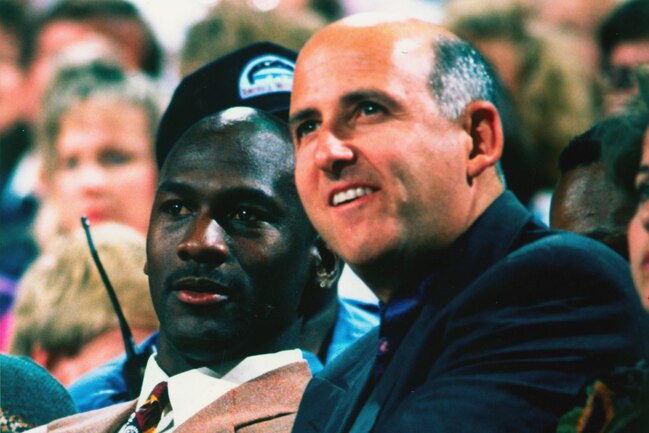
Michael Jordan and David Falk in 1992.
While Jordan was known to have his own direction in mind, he always sought advice from his close circle of advisors, including the Bulls. In fact, in the days leading up to Jordan's meeting with Falk and Polk, he talked through his itch with his coach, Phil Jackson, and they even started to negotiate how many games he might play. At first, Jordan wanted to return in the postseason. Jackson countered with 20 games; Jordan then envisioned 10 to 15. It would eventually be 17.
But one thing was clear: Jordan was more eager to make a comeback during the regular season, so he called for the final huddle with Falk and Polk, who both arrived not knowing what their client had in mind. For hours at Jordan's house, they discussed the cons (he could fall below expectations) and pros (a glimpse of his talent would suffice in shortened play).
Ultimately, Jordan stayed the course and told them he wanted to return.
Jim Gund/Getty Images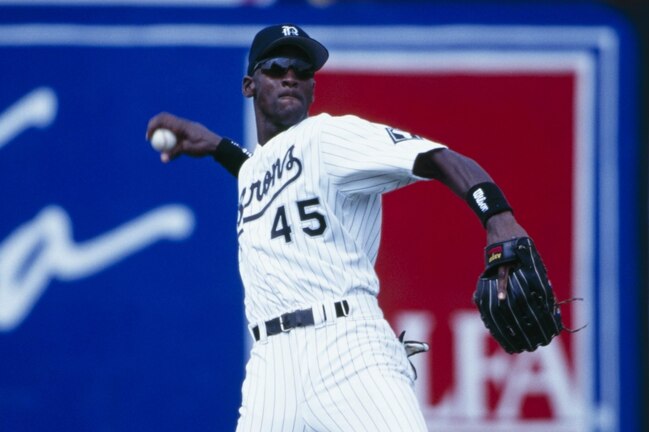
Jordan on the Birmingham Barons.
"It wasn't really something I anticipated," said Polk, who now works for Jordan as the vice chairman of the Charlotte Hornets. "If it wasn't for the baseball strike, I'm not sure he would've come back at that time, or ever. He was really enjoying himself—he really liked the camaraderie with the guys and the less fanfare around him—even though he wasn't anywhere as successful in baseball. But he's such a competitive guy that he wasn't going to quit for that reason, and he was working really hard to get his baseball game to the level of where his basketball game had been.
"We recognized that he had developed different muscles for baseball—slow-twitch muscles versus fast-twitch," Polk said. "He had bulked up in baseball, particularly in the upper body, and those are things that weren't necessarily compatible to him just stepping out quickly on to the basketball court. And he recognized that, and we talked about it, but he still decided that he wanted to go back sooner than waiting. He felt that he could step back in and help the team."
That same day, Jordan shared the news with Jackson and Bulls owner Jerry Reinsdorf. Falk, who's now the CEO of F.A.M.E., privately called former NBA commissioner David Stern and dikk Ebersol, who was the chairman of NBC Sports. Then Falk took about four attempts to write a press release officially announcing Jordan's return, trying to put into words how his client had a change of heart and missed the game.
Courtesy of the Hornets
Jordan and Curtis Polk at this year's "My Hero Gala," the Hornets' annual fundraising event.
But Jordan wasn't comfortable with the different drafts, and at that moment, he took matters into his own hands. He thought of a way to keep to his style of being simple and straight to the point:
"I'm Back."
"He felt that it didn't require an explanation or a justification," said Falk, who faxed the final press release to media outlets. "I thought I was a pretty good writer, written a lot of things, but he said, 'Let me do this.' So he sat down at the table and thought about it for a couple of minutes and he wrote, 'I'm Back.' He said, 'OK, that's it.' It was classic Michael Jordan. It was elegant in simplicity, it communicated how he felt, it said it all.
"It was like Arnold Schwarzenegger in The Terminator, 'I'll be back.' Sometimes you don't have to be prosaic to be elegant in your expression. His two words expressed it all."
In roughly the year leading up to his return, Jordan had really only played pickup basketball with his teammates on the Birmingham Barons minor league baseball team. His sole focus was the major leagues. Not only did he hope to fulfill his father, James', hope for that one day, but also the Chicago White Sox told him that he had a good chance of making their September call-ups.
But because of the labor strike, if a player wasn't on an MLB roster, he couldn't go to spring training with an MLB team; it had to be a minor league one. Jordan didn't want to do that.
"At that point, now he's looking for something to do because he can't play baseball anymore," said Sam Smith, a longtime Bulls beat writer who's released three books on Jordan.
While Jordan had stopped by the Berto Center periodically during his basketball absence to say hello, he hadn't practiced with the team. That changed one day, in early March. Then he returned the following day. While nobody on the team really knew if he was plotting a return—they didn't ask, he didn't bring it up—the second day triggered a thought of what was to come.
"When he came back-to-back days, I was like, 'Whoa, he's thinking about playing again,'" said Pete Myers, who filled in for Jordan at shooting guard from 1993-95.
"You didn't have to be Einstein to figure that out, seeing him enjoying the game and getting mad when he loses," backup center Luc Longley said. "In the practice sessions, it was obvious to everybody that he had an appetite for it again. My read on it was that he had already made a decision."
Mind you, this was all happening during the stretch run of the season, the Bulls as a lower seed trying to make the playoffs.
Jonathan Daniel/Getty Images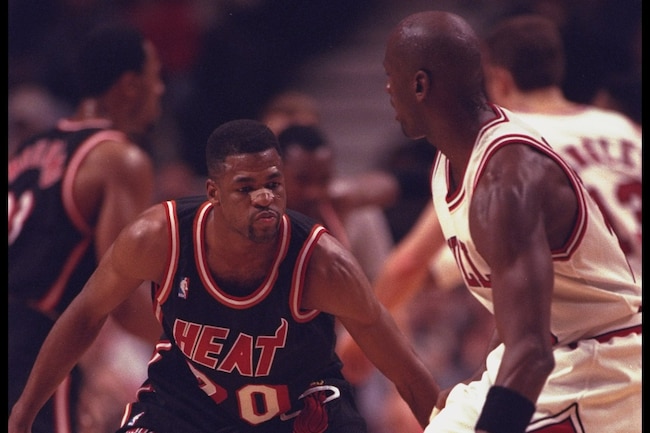
Pete Myers matching up with Jordan when he was on the Heat the following season (1995-96) after Jordan's return.
"It was a distraction for sure, but a welcome one," Longley said. "The practices started to be much more heated, much more competitive—longer even, too. We had to get a lot of work in to get Michael up to speed with the team, or the team up to speed with Michael depending on which way you want to look at it.
"I do remember there being a lot of scrimmaging. Michael wanted to get up and down the court, and he was matching up with Scottie, and Scottie was in midseason form and at the height of his game. So that was a good way to bring Michael up to speed. Michael was just feeling his own way and we were wondering what was going on."
After scrimmages, Jordan put in individual work to further regain his offensive rhythm. He organized shooting drills and one-on-one games with teammates, especially against Myers, who was a Bulls rookie in 1986-87. That season, the 6'6" Myers, who had standout size, quickness and anticipation defensively, was assigned to guard Jordan in practices. "I made him work for everything, pushed him every day," said Myers, who rejoined the Bulls on Oct. 7, 1993, the day after Jordan retired.
So how did Myers do in those one-on-ones in 1995? "C'mon, I didn't have a chance," said Myers, who would lose in the range of 12-4. "Mike could run off 12 straight buckets."
"He still knew personnel, he knew how coaches were going to try to guard him—he knew all that," Myers said. "He was just trying to get himself ready for the battle, just fine-tuning himself to get ready. He had reworked his body and gotten his upper body much stronger because he was trying to hit for power, so his timing was a little off."
Andrew D. Bernstein/Getty Images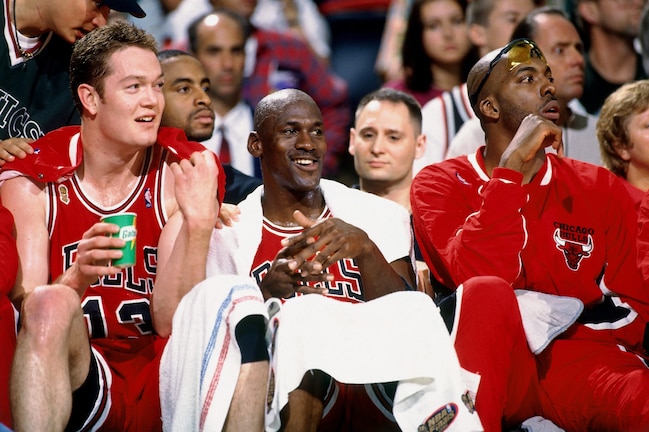
Jordan and Luc Longley (left) in the 1996 Finals.
To overcome those issues, Jordan turned to his longtime personal trainer, Tim Grover, who, like everyone else, didn't know what Jordan's end result was at the time. "He was basically testing himself to see where he was," said Grover, who was managing Jordan's baseball workouts until they returned to Chicago together around early March.
Every day, Grover met Jordan at his house in the early morning for strength and conditioning, and then after practice, they reconvened at his house for recovery, stretching and other maintenance. The overall plan was to reconfigure Jordan's jumping abilities and upper-body movements for better shooting, while toning down. Jordan was between 225 and 228 pounds for baseball, but his basketball playing weight was better suited between 213 and 216.
"He was playing right field," said Grover, whose gym is still based in Chicago. "When you throw a baseball in from right field, it's more of a straight line, so your muscles in your shoulders are working differently than they are when you're shooting a basketball, where you want to create as much arch as possible. So training the shoulder area, the girdle and the trunk totally had to change.
"Also, his legs needed work from an elevation standpoint. In baseball, you don't jump that much and it's more of a running motion, especially if you're in the outfield. But in basketball, the muscles are constantly having to fire and move in different directions. And Michael, his whole game was built on instincts. Not playing consistently at such a high level for a year and a half, those instincts have a tendency to become dormant a little bit."
Grover noted that if you watch his actual games that season, you would notice some deficiencies with his jump shot. His regular-season percentage (.411) was a career low.
"The elevation wasn't quite there, the shot arch was a little bit different," Grover said. "He didn't have a whole offseason to prepare."
Last edited:




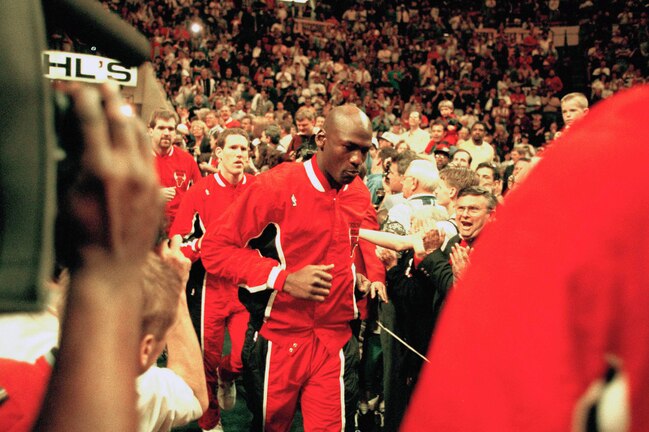
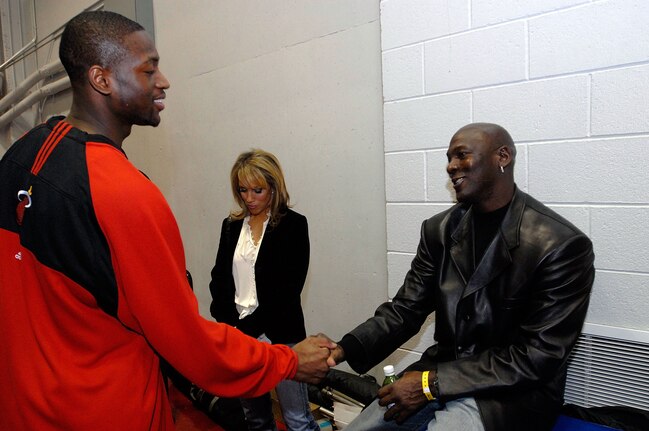

 MJ
MJ


 remember Tyson was just getting out of jail too.
remember Tyson was just getting out of jail too.
